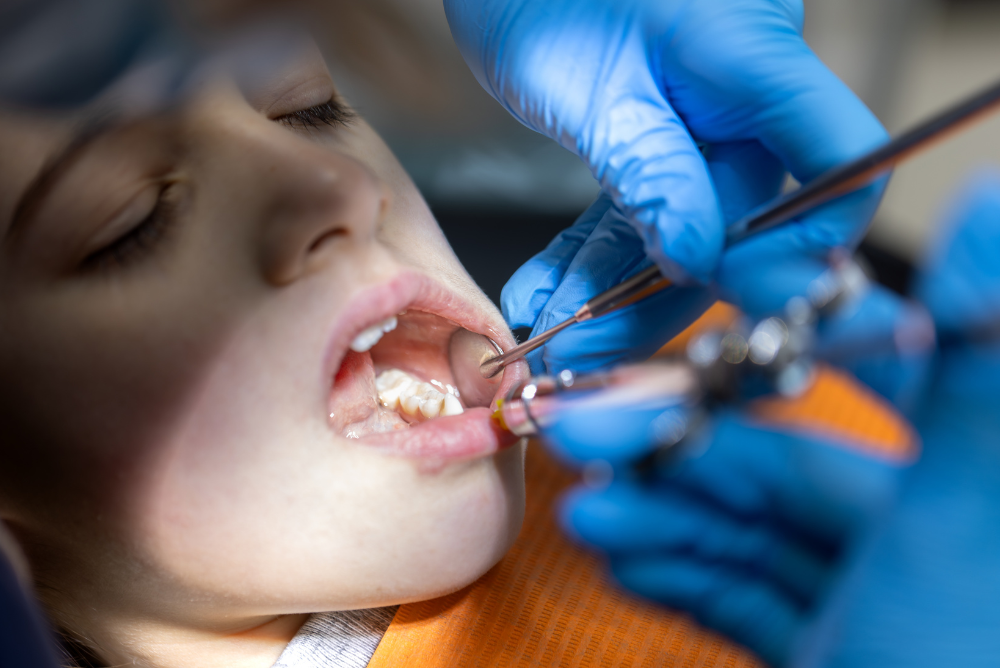Have you ever wondered if all tooth removal is the same? Tooth extractions in SW Calgary are often performed. However, not every extraction is alike. Your dentist can offer you several ways to extract a tooth safely and effectively. Understanding the various kinds of tooth extractions will help you feel more prepared and confident regarding your dental health.
What is a Dental Extraction?
The removal of a tooth from the jaw is known as a dental extraction. If decay, infection, overcrowding or trauma has affected a tooth, extraction may be necessary. Extractions can either be simple or surgical, depending on each case. Each type varies in technique and level of expertise. Hence, the procedure is safe and less painful.
Your dentist in SW Calgary will recommend the best way to treat your chipped tooth after assessing it and taking X-rays. This ensures the best outcome and supports proper healing.
What is the Simple Tooth Extraction Process?
The removal of simple teeth that can be seen can be carried out on those teeth that are visible and easy to access. Usually, the process only involves one or more of the following activities.
- Applying local anesthesia to the site to numb the area.
- Using instruments to separate the tooth.
- With the help of forceps, the tooth is removed carefully.
Simple extractions are quick and usually painless. These extractions are ideal for teeth that are fully erupted and healthy enough to remove without the need for surgery.
How Surgical Tooth Extraction is Performed?
Complex teeth extractions include molars with curved roots and teeth that have.
- Impacted or broken below the gumline.
- Not fully erupted.
- In a position that makes removal difficult.
When a dentist takes out a tooth, sometimes they have to cut through the gum and bone to get it. This procedure removes the tooth carefully without damaging neighbouring tissue.
Painless Tooth Extraction Techniques
With the help of modern-day anesthesia and sedation procedures, today’s Tooth extractions near you are painless. These may include.
- Local anesthesia to numb the area.
- Nitrous oxide (laughing gas) for relaxation.
- Oral or IV sedation for patients with dental anxiety.
As these techniques minimize pain and enhance the comfort of the experience, they can help benefit the surgery-extraction patients.
When are Tooth Extractions Necessary?
There are a few scenarios when tooth extractions might be needed
- Severe tooth decay or infection.
- Overcrowding of teeth.
- Trauma or injury to the tooth.
- Preparation for orthodontic treatment.
A dentist near you can assess your oral health and let you know whether extraction is the best way to protect your smile.
Recovery After Tooth Extraction
The extraction determines how fast a person will recover from a tooth extraction. Usually, a simple extraction heals in a few days. A surgical extraction may take a week or more. Tips for a smooth recovery include.
- Avoiding hard or chewy foods.
- Rinsing gently with warm salt water.
- Taking prescribed pain medication as needed.
- Keeping the extraction site clean to prevent infection.
Restore Your Smile Comfortably – Visit Today!
Need a safe and comfortable tooth extraction? At Trinity Hills Dental, we provide gentle, professional and personalized care. Book an appointment today and get on your way to a pain-free, effective smile.
FAQs
How long does it take to recover from a tooth extraction?
In 3-5 days healing time of simple extractions; surgical extractions have a 7-10 days healing time.
Is tooth extraction painful?
Modern anesthesia and sedation make extractions largely painless during the procedure.
Can all teeth be extracted easily?
Not always; impacted or broken teeth may require surgical techniques.
How do I know if I need a tooth extraction?
Some of the signs are extreme pain, an infected area, or teeth that are loose. The diagnosis stage is really the job of a dentist.
What should I do after a tooth extraction?
Proper healing and reduction of complications are the aims of the patient following the dentist’s instructions after the tooth extraction

